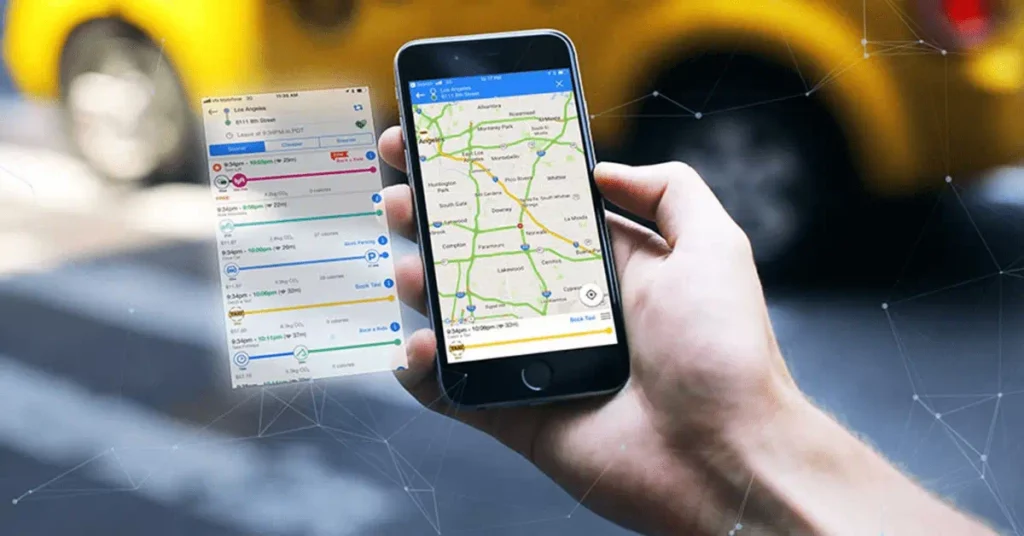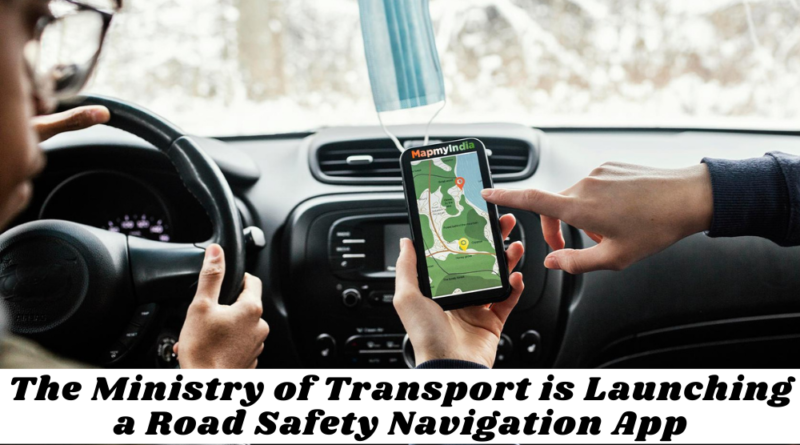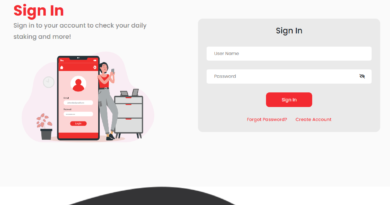Rajkotupdates.news: The Ministry of Transport is Launching a Road Safety Navigation App
The Ministry of Transport is Launching a Road Safety Navigation App
That sounds like a great initiative! A road safety navigation app can be a valuable tool in promoting safe driving practices and reducing accidents on the roads. Such an app can provide real-time traffic updates, navigation guidance, and safety alerts to drivers.
Here are some features that the Ministry of Transport could consider including in the road safety navigation app:
- Real-time Traffic Updates: The app can provide information about traffic congestion, road closures, and accidents, allowing users to plan their routes accordingly and avoid potential hazards.
- Navigation Assistance: The app can offer turn-by-turn directions to help drivers reach their destinations efficiently and safely. It can suggest alternative routes based on traffic conditions or road hazards.
- Speed Limit Notifications: The app can notify drivers about speed limits in different areas to encourage them to drive within the prescribed limits and promote safer driving habits.
- Hazard Warnings: The app can provide alerts about potential road hazards such as sharp curves, slippery surfaces, or construction zones. This information can help drivers be more cautious and adapt their driving accordingly.
- Driver Fatigue Alerts: The app can include features to detect signs of driver fatigue, such as prolonged periods of continuous driving without breaks. It can then provide reminders to take rest stops and prevent accidents caused by drowsy driving.
- Emergency Services Integration: The app can have a built-in emergency button to quickly contact emergency services in case of accidents or other emergencies. This can facilitate faster response times and potentially save lives.
- Safety Tips and Reminders: The app can provide periodic safety tips, reminders, and educational content to promote safe driving practices. This can include information on seatbelt usage, avoiding distractions, and the dangers of drunk driving.
- Community Reporting: Users can contribute to the app’s safety features by reporting road hazards, accidents, or other incidents they encounter while driving. This crowdsourced information can be valuable for other users and for improving the overall accuracy of the app.
- Personalized Driving Statistics: The app can track and display personalized driving statistics, such as average speed, distance traveled, and fuel efficiency. This can help users become more aware of their driving habits and encourage them to make safer choices.
- Gamification Elements: To further engage users, the app can include gamification elements, such as achievements or rewards for safe driving practices. This can incentivize users to adopt safer habits and maintain their focus on road safety.
It’s important for the Ministry of Transport to prioritize user-friendly design and ensure that the app is accessible to a wide range of users. Additionally, promoting awareness and encouraging drivers to use the app through campaigns and educational initiatives can maximize its impact on road safety.
How does the Road Safety Navigation App work?
The Road Safety Navigation App utilizes various technologies and data sources to provide users with real-time road safety information and navigation assistance. Here’s a general overview of how the app might work:
- Data Collection: The app gathers data from different sources to provide accurate and up-to-date information. This can include traffic data from transportation agencies, GPS data from users’ devices, and data from other connected vehicles or infrastructure.
- User Interface: The app presents a user-friendly interface that allows drivers to input their destination and access different features and settings. The interface can be designed for easy interaction while driving, using voice commands or simplified touch gestures.
- Navigation Guidance: Once the user inputs their destination, the app calculates the optimal route based on various factors such as traffic conditions, road closures, and potential hazards. It provides turn-by-turn directions and visual or voice guidance to help the driver navigate the route safely.
- Real-time Traffic Updates: The app continuously receives real-time traffic data, including congestion levels, accidents, and road closures. It analyzes this information to update the estimated arrival time and suggest alternative routes if necessary.
- Safety Alerts: The app monitors the road conditions and identifies potential safety hazards, such as sharp turns, slippery roads, or construction zones. It delivers proactive alerts to the driver, either through visual notifications or voice prompts, to warn them about upcoming hazards and encourage cautious driving.
- Speed Limit Notifications: The app may integrate with a database of speed limits for different road segments. It compares the user’s driving speed with the posted speed limits and provides notifications when the driver exceeds the limit, reminding them to adjust their speed and drive safely.
- Emergency Assistance: In case of emergencies, the app can include an emergency button or quick-access feature to contact emergency services directly. This can help users quickly report accidents or request assistance when needed.
- User Reporting: The app may offer a reporting feature that allows users to contribute to the road safety ecosystem. Users can report hazards, accidents, or any other road-related incidents they encounter while driving. This information can help update the app’s data and improve the accuracy of safety alerts.
- Personalization and Analytics: The app can collect and analyze data about users’ driving behavior, such as average speed, distance traveled, and compliance with traffic rules. This data can be used to provide personalized insights and suggestions to improve driving habits.
- Backend Infrastructure: The app relies on a robust backend infrastructure to process and analyze the collected data, generate routing information, and deliver real-time updates to users. It may involve cloud-based servers, algorithms for data analysis, and integration with external APIs for traffic and safety data.
It’s important to note that the specific implementation and features of the Road Safety Navigation App may vary depending on the technology used, the available data sources, and the requirements set by the Ministry of Transport or the app developers.
What is the purpose of launching this app by the Ministry of Transport?
The purpose of launching the Road Safety Navigation App by the Ministry of Transport is to enhance road safety, reduce accidents, and promote responsible driving practices. Here are some key objectives that the Ministry of Transport might have in mind:
- Accident Reduction: The app aims to contribute to a significant reduction in road accidents by providing drivers with real-time information about traffic conditions, potential hazards, and safe driving practices. By offering guidance and alerts, the app helps drivers make informed decisions on the road and avoid dangerous situations.
- Improved Traffic Management: The app can assist in traffic management efforts by providing real-time traffic updates, suggesting alternative routes, and alleviating congestion on busy roads. By optimizing travel routes and distributing traffic more efficiently, the app aims to improve overall traffic flow and reduce bottlenecks.
- Encouraging Responsible Driving: Through features such as speed limit notifications, driver fatigue alerts, and safety reminders, the app encourages responsible driving behavior. It aims to raise awareness about the importance of following traffic rules, avoiding distractions, and adhering to speed limits, ultimately promoting safer roads for all users.
- Data Collection for Road Infrastructure Planning: The app can serve as a valuable source of data for the Ministry of Transport. By collecting information on traffic patterns, road conditions, and user feedback, the app can help authorities make informed decisions regarding road maintenance, infrastructure improvements, and future planning initiatives.
- Promoting Public Awareness and Engagement: Launching a road safety navigation app highlights the Ministry of Transport’s commitment to promoting road safety and encourages public engagement in improving driving habits. The app can serve as a platform to disseminate educational content, safety campaigns, and initiatives aimed at raising awareness about road safety issues.
- Collaboration with Stakeholders: The app can foster collaboration with various stakeholders, such as transportation agencies, law enforcement, and road maintenance authorities. By sharing data and insights, the app can support collaborative efforts to improve road safety and address specific challenges in transportation management.
Overall, the Ministry of Transport’s objective in launching the Road Safety Navigation App is to leverage technology and data-driven solutions to create safer road environments, reduce accidents, and enhance the overall driving experience for all road users.
Can anyone use the app?
In general, road safety navigation apps are designed to be accessible to a wide range of users. The intention is to make them available to anyone who owns a compatible device, such as a smartphone or a GPS-enabled device. However, specific considerations and requirements may vary based on the app’s design and the policies set by the Ministry of Transport or the app developers.
Here are some points to consider regarding app accessibility:
- Device Compatibility: The app should be compatible with popular operating systems, such as iOS and Android, to ensure broader accessibility. It should be available for download from app marketplaces like the Apple App Store or Google Play Store.
- Language Support: The app should support multiple languages, especially those commonly spoken in the region or country where it is being launched. This ensures that a larger population can use and benefit from the app’s features.
- User Interface Design: The app’s user interface should be designed with accessibility in mind. It should have clear and intuitive navigation, legible text, and appropriate color contrast to accommodate users with visual impairments or other accessibility needs.
- Connectivity Requirements: The app may require an internet connection to access real-time traffic updates, navigation data, and other features. However, efforts can be made to provide offline functionality, such as pre-downloaded maps and basic routing capabilities, to accommodate users in areas with limited connectivity.
- User Registration and Privacy: The app may require users to register an account to personalize settings or access certain features. However, privacy concerns should be addressed, and users should have control over their data and the ability to opt-out if desired.
- Education and Training: To maximize the app’s usability, it can be accompanied by educational materials or tutorials to guide users on how to utilize its features effectively. This can help users of varying technological proficiency to navigate the app with confidence.
It’s important to note that while the app aims to be accessible to a wide range of users, individual factors such as device compatibility, network availability, and language support may still impact its usability for certain individuals. Efforts should be made to address these limitations and ensure inclusivity to the extent possible.
What are its main features?
The main features of a Road Safety Navigation App can vary depending on its specific design and functionality. However, here are some common features that such an app might include:
- Real-time Traffic Updates: The app provides real-time information about traffic conditions, including congestion, accidents, and road closures. It allows users to plan their routes based on current traffic situations, minimizing travel time and avoiding potential hazards.
- Navigation Assistance: The app offers turn-by-turn directions and navigation guidance to help users reach their destinations efficiently. It calculates the optimal routes considering factors like traffic, road conditions, and user preferences.
- Safety Alerts: The app alerts users about potential safety hazards on the road, such as sharp turns, school zones, or construction areas. It provides warnings or visual prompts to encourage cautious driving and reduce the risk of accidents.
- Speed Limit Notifications: The app can display speed limits for different road segments and provide notifications when users exceed the prescribed limits. This feature promotes adherence to speed regulations and encourages safer driving practices.
- Voice Commands: The app may support voice commands for hands-free operation. Users can verbally input destinations, ask for route updates, or request specific information without needing to manually interact with the app.
- Points of Interest: The app can display nearby points of interest, such as gas stations, rest areas, restaurants, or hospitals. This feature helps users find essential services along their route and ensures a convenient and safe driving experience.
- Offline Maps: The app may offer the option to download maps and store them locally on the device. This allows users to access navigation and safety features even when they are in areas with limited or no internet connectivity.
- User Reporting: The app can include a feature that allows users to report road hazards, accidents, or other incidents they come across while driving. This crowdsourced information enhances the accuracy and timeliness of safety alerts and helps create a more comprehensive road safety ecosystem.
- Emergency Assistance: In case of emergencies, the app can provide quick access to emergency services, such as direct calls to local authorities or emergency hotlines. This feature enables users to report accidents or seek assistance promptly.
- Customization and Preferences: The app may offer customization options, allowing users to personalize settings according to their preferences. This can include route preferences (such as avoiding toll roads or highways), language settings, or display preferences.
- Driver Analytics: The app may collect and display driving analytics, such as average speed, distance traveled, or fuel efficiency. This feature provides users with insights into their driving habits and encourages them to adopt safer and more eco-friendly practices.
It’s important to note that the actual features of a Road Safety Navigation App can vary based on the specific goals, resources, and technological capabilities of the Ministry of Transport or the app developers.
Can you tell me when the app will be available?
As an AI language model, I don’t have access to real-time information or specific release schedules for individual apps or projects. To find out when the Road Safety Navigation App will be available, I recommend checking official sources such as the website or announcements from the Ministry of Transport or relevant government agencies responsible for its development and launch. They will have the most accurate and up-to-date information regarding the availability and release date of the app.

What are the benefits of the app for road safety?
The Road Safety Navigation App can bring several benefits to road safety. Here are some key advantages:
- Real-time Traffic Updates: The app provides real-time information about traffic conditions, enabling drivers to plan their routes accordingly. By avoiding congested areas and traffic jams, drivers can reduce frustration, maintain focus, and minimize the risk of aggressive driving behaviors.
- Hazard Warnings: The app alerts drivers about potential hazards on the road, such as accidents, road construction, or adverse weather conditions. By providing timely warnings, drivers can take necessary precautions, adjust their driving behavior, and avoid dangerous situations.
- Speed Limit Notifications: The app can display speed limits and notify drivers when they exceed the prescribed limits. This feature promotes compliance with speed regulations and encourages drivers to maintain safe speeds, reducing the likelihood of accidents caused by speeding.
- Driver Fatigue Alerts: By monitoring driving patterns and duration, the app can detect signs of driver fatigue and provide alerts to take rest breaks. This helps prevent accidents caused by drowsy driving, promoting driver well-being and road safety.
- Alternative Routes: The app suggests alternative routes in case of traffic congestion or road closures. By guiding drivers to less crowded roads, the app helps to distribute traffic and alleviate congestion, reducing the risk of rear-end collisions and improving overall traffic flow.
- Emergency Assistance: In the event of accidents or emergencies, the app can provide quick access to emergency services. This immediate connection enables drivers to report incidents promptly and receive assistance, potentially leading to faster response times and improved outcomes.
- Driver Behavior Monitoring: The app may collect data on driving behaviors, such as speeding, harsh acceleration, or sudden braking. This information can be used to provide feedback to drivers, raising awareness about their driving habits and encouraging safer practices.
- Public Awareness and Education: The app can serve as a platform for promoting road safety awareness and education. Through features like safety tips, reminders, and educational content, it encourages drivers to adopt responsible and safe driving behaviors.
- User Reporting: By incorporating user reporting features, the app encourages drivers to contribute to the road safety ecosystem. Users can report road hazards, accidents, or other incidents, allowing for a more comprehensive and timely response to potential risks.
Overall, the Road Safety Navigation App aims to improve road safety by providing drivers with real-time information, guidance, and alerts to help them make informed decisions and adopt safer driving practices. By addressing common causes of accidents, promoting compliance with traffic regulations, and enhancing driver awareness, the app contributes to reducing accidents and creating a safer driving environment.
How can drivers prepare for the launch of the app?
To prepare for the launch of the Road Safety Navigation App, drivers can take the following steps:
- Stay Informed: Stay updated with news and announcements from the Ministry of Transport or relevant government agencies regarding the app’s launch. Follow their official website, social media accounts, or subscribe to newsletters to receive the latest information.
- Device Compatibility: Ensure that your device is compatible with the app. Check the system requirements, such as operating system version and hardware specifications, to ensure your device can support the app’s functionalities.
- Update Software: Keep your device’s operating system and navigation apps up to date. Regularly check for software updates and install them to ensure optimal performance and compatibility.
- Familiarize with App Features: Once the app’s features and functionalities are revealed, familiarize yourself with them through user guides, tutorials, or demonstrations. Understand how the app’s navigation, alerts, and safety features work to maximize their benefits while driving.
- Install the App: When the app becomes available, download and install it from the official app store, following the provided instructions. Ensure that you download the authentic and official version of the app to avoid any potential security risks.
- Set Preferences: Explore the app’s settings and personalize them according to your preferences. This may include selecting your preferred language, route preferences, alert preferences, or other customization options offered by the app.
- Understand Data Usage: Be aware of the app’s data requirements and how it utilizes your device’s data connectivity. If the app relies on internet access, ensure you have an appropriate data plan or access to a reliable Wi-Fi connection to avoid interruptions in service.
- Learn App Usage: Take the time to learn how to use the app effectively and safely while driving. Familiarize yourself with its user interface, voice commands (if available), and how to interact with the app without causing distractions.
- Provide Feedback: As you start using the app, provide feedback to the developers or relevant authorities. Report any bugs or issues encountered, suggest improvements, or share your user experience to help enhance the app’s functionality and usability.
- Stay Updated: As the app evolves and new features or updates are released, stay updated by regularly checking for app updates and reading release notes. This ensures you benefit from the latest enhancements and improvements.
Remember to prioritize safety while using the app. Follow local traffic laws and regulations, avoid distractions while driving, and use the app’s features responsibly to enhance your overall road safety experience.
Frequently asked Questions (FAQs)
Certainly! Here are some frequently asked questions (FAQs) about the Road Safety Navigation App, along with their corresponding answers:
Q: Is the app free to download and use? A: The pricing and availability details will be provided upon the app’s release. It is advisable to check the official app store or the Ministry of Transport’s website for information regarding any associated costs.
Q: Will the app work on both iOS and Android devices? A: The app is designed to be compatible with both iOS and Android devices. It will be available for download on the respective app marketplaces, such as the Apple App Store and Google Play Store.
Q: How can I download and install the app? A: Once the app is available, you can search for it in the app store on your device (Apple App Store or Google Play Store), locate the app, and follow the instructions to download and install it.
Q: Does the app require an internet connection to function? A: The app may require an internet connection for features such as real-time traffic updates, map data, and certain functionalities. However, offline features, such as pre-downloaded maps, may be available to ensure basic functionality even without an internet connection.
Q: Can I use the app in offline mode? A: Some features of the app, such as pre-downloaded maps and basic routing, may be accessible in offline mode. However, for real-time updates and advanced functionalities, an internet connection may be required.
Q: How accurate are the real-time traffic updates provided by the app? A: The app strives to provide accurate real-time traffic updates by utilizing various data sources, such as traffic sensors, user reports, and historical data. However, it’s important to note that occasional inaccuracies or delays in reporting may occur due to unforeseen circumstances or technical limitations.
Q: What safety features does the app offer to prevent accidents? A: The app may offer safety features such as real-time hazard warnings, speed limit notifications, driver fatigue alerts, and other safety reminders to promote responsible driving and reduce the risk of accidents. The specific safety features will be outlined in the app’s documentation or user guide.
Q: Can I customize the app’s settings according to my preferences? A: Yes, the app may provide customization options to personalize settings based on your preferences. This may include route preferences, notification preferences, language settings, or display preferences. Explore the app’s settings to customize it according to your needs.
Q: How can I report road hazards or incidents through the app? A: The app may include a feature that allows users to report road hazards, accidents, or other incidents they encounter while driving. This information can be shared with the appropriate authorities to enhance road safety. Look for the reporting feature within the app’s interface or menu options.
Q: Will the app collect and store my personal data? A: The collection and storage of personal data will be governed by the app’s privacy policy. It is advisable to review the app’s privacy policy to understand what data is collected, how it is used, and what measures are taken to protect user privacy.
Please note that the specific FAQs and answers may vary depending on the actual details and features of the Road Safety Navigation App launched by the Ministry of Transport.
Q: When will the Road Safety Navigation App be available for download?
A: The exact release date of the app will be announced by the Ministry of Transport. Stay updated with official announcements for the availability of the app.
Q: Is the app free to download and use?
A: The pricing and availability details will be provided upon the app’s release. It is advisable to check the official app store or the Ministry of Transport’s website for information regarding any associated costs.
Q: Will the app work on both iOS and Android devices?
A: The app is designed to be compatible with both iOS and Android devices. It will be available for download on the respective app marketplaces, such as the Apple App Store and Google Play Store.
Q: How can I download and install the app?
A: Once the app is available, you can search for it in the app store on your device (Apple App Store or Google Play Store), locate the app, and follow the instructions to download and install it.
Q: Does the app require an internet connection to function?
A: The app may require an internet connection for features such as real-time traffic updates, map data, and certain functionalities. However, offline features, such as pre-downloaded maps, may be available to ensure basic functionality even without an internet connection.
Q: Can I use the app in offline mode?
A: Some features of the app, such as pre-downloaded maps and basic routing, may be accessible in offline mode. However, for real-time updates and advanced functionalities, an internet connection may be required.
Q: How accurate are the real-time traffic updates provided by the app?
A: The app strives to provide accurate real-time traffic updates by utilizing various data sources, such as traffic sensors, user reports, and historical data. However, it’s important to note that occasional inaccuracies or delays in reporting may occur due to unforeseen circumstances or technical limitations.
Q: What safety features does the app offer to prevent accidents?
A: The app may offer safety features such as real-time hazard warnings, speed limit notifications, driver fatigue alerts, and other safety reminders to promote responsible driving and reduce the risk of accidents. The specific safety features will be outlined in the app’s documentation or user guide.
Q: Can I customize the app’s settings according to my preferences?
A: Yes, the app may provide customization options to personalize settings based on your preferences. This may include route preferences, notification preferences, language settings, or display preferences. Explore the app’s settings to customize it according to your needs.
Q: How can I report road hazards or incidents through the app?
A: The app may include a feature that allows users to report road hazards, accidents, or other incidents they encounter while driving. This information can be shared with the appropriate authorities to enhance road safety. Look for the reporting feature within the app’s interface or menu options.
Q: Will the app collect and store my personal data?
A: The collection and storage of personal data will be governed by the app’s privacy policy. It is advisable to review the app’s privacy policy to understand what data is collected, how it is used, and what measures are taken to protect user privacy.
Please note that the specific FAQs and answers may vary depending on the actual details and features of the Road Safety Navigation App launched by the Ministry of Transport.
Visit our site: News Infowars




